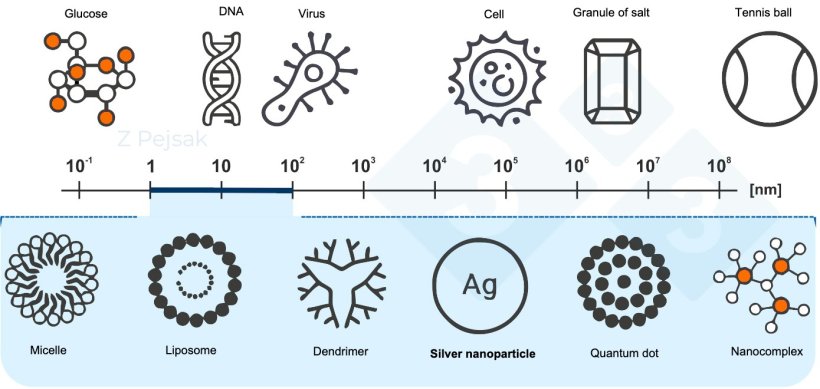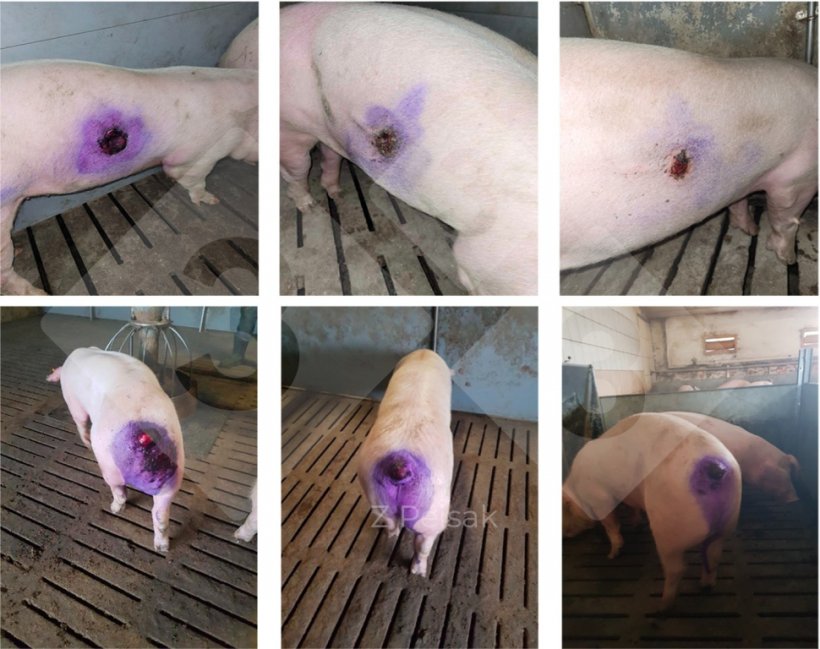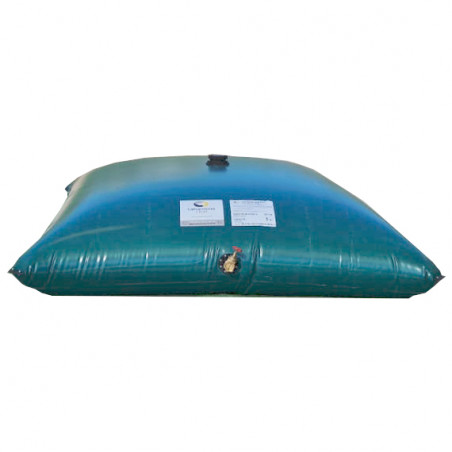Belonging to heavy metals, silver is an element with versatile properties, extremely valuable for humanity, especially in the era of increasing antibiotic resistance. A particular feature of this metal is its bactericidal, virucidal, and fungicidal properties (Maillard et al.2016). Without knowing the mechanisms or the spectrum of action of this element, silver (silver compounds) has been used in medicine for millennia. The discovery of antibiotics led to a retreat from the widespread use of silver compounds in wound therapy.
New discoveries associated with the dynamic development of various areas of science have highlighted the enormous potential for the use of silver, in the form of nanoparticles (NPS).

In recent years, silver nanoparticles (active forms of silver, AgNP) have been widely introduced into various areas of life. The use of AgNPs has become so frequent that scientists, in the field of environmental toxicology, point out that the rapidly growing use of nanoparticles, including AgNPs, may in certain situations adversely affect the environment (Auffan et al. 2009). For this reason, it has been postulated that the achievements of silver nanotechnology are primarily applicable to the medical and pharmaceutical sectors.
Nanoparticle technology
As already mentioned, the use of silver in the form of nanoparticles has been made possible by nanotechnology. Nanotechnology enables the controlled creation and use of various structures and materials with nanometric sizes, i.e. similar to the size of single atoms and molecules. It is worth recalling that nano is a prefix denoting a multiplication factor of 0.000 000 001 = 10-9 or a billionth.
The process of creating nanoparticles can be carried out in two ways. The top-down method involves fragmenting the material until the individual particles are nanoscale in size, while the bottom-up method involves building nanostructures starting from single atoms.


Impact of nanotechnology on the physical and chemical properties of materials
Particularly important is the ability of nanoparticles to penetrate most barriers, including biological ones, as these underlie the high activity against microorganisms.
The second important practical property of nanoparticles is the development of a nano-specific surface area. For nanomaterials this parameter is very high, e.g. the specific surface area of silicon nanoparticles contained in a volume similar to a raindrop is comparable to that of a large football pitch. This is especially important in the context of microbial activity of nanoparticles, where a contact mechanism is essential (Pullit et al.2010). AgNPs are of the most widespread interest to practitioners.
As for silver, nanoparticles have widely replaced ionic silver for many of the reasons mentioned above. Importantly in the presented case, AgNPs are significantly safer than ionic silver and their antibacterial potential can be clearly enhanced by various ways, including combining with specific antibiotics (Chojniak et al., 2018).
There are various concepts of how silver nanoparticles act on microorganisms to induce biocidal effect.
Firstly, silver nanoparticles have the ability to attach to and penetrate the bacterial cell wall, resulting in the disruption of cell membrane permeability, which can consequently lead to cell death.
The second most commonly presented concept concerns the ability of nanoparticles to release silver ions. These ions can interact with the thiol groups of many important enzymes and inactivate them. Bacterial cells in contact with silver "take up" silver ions. Once free silver ions are absorbed into the cells, respiratory enzymes can be inactivated, generating reactive oxygen forms that, among other things, attack the cell. Significantly, silver has a high affinity for sulphur and phosphorus. Interaction of silver ions with DNA sulphur and phosphorus can cause difficulties with DNA replication, cell proliferation and even result in the death of microorganisms. Silver ions can also inhibit protein synthesis by denaturing ribosomes in the cytoplasm.
The concepts presented above are those most commonly discussed.
Possibilities for the use of silver nanoparticles in veterinary medicine
It has been proven beyond doubt that AgNPs have bactericidal and bacteriostatic effects and inhibit the growth of fungi and protozoa (Speruda, et al. 2019.). Silver nanoparticles have antiviral properties. The aforementioned characteristics indicate that we can attribute disinfecting properties to nanoparticles.
In veterinary practice, including swine health care, silver nanoparticles have been used with considerable success in the treatment of skin wounds associated with, among other things, cannibalism (Figure 3).


Preparations containing silver nanoparticles are increasingly being used in swine farms for the disinfection of water systems.
Silver nanoparticles are becoming an important element in various aspects of biosecurity, which includes periodic and ongoing disinfection (disinfection of livestock buildings) carried out, for example, by fogging.
The study (Tarasiuk & Wojciechowski, 2022) compared the effectiveness of disinfection carried out with a product with AgNPs to disinfection carried out with an iodophor product. It was shown that the use of a product containing AgNPs in the periodic disinfection of facilities had a significant effect on reducing the number of microorganisms that contaminate the environment and gave better results than disinfection with an iodophor product. The reduction of the infectious potential was reflected in the production results. The death rate of pigs in facilities where disinfection was carried out with a AgNPs product was significantly lower than in the positive control group - where disinfection was carried out with an iodophor product. At the same time, it was shown that the cost of treatment per finishing unit was reduced. In the positive control group, the unit cost of veterinary care, per individual weighing from 30 kg to the end of fattening, was PLN 5.69. In the experimental group, it was at the same level of PLN 4.02. It can be said that a 30% reduction in treatment costs was obtained. Currently, silver nanoparticle products are slightly more expensive although they are expected to drop in price as their use increases.
It is worth mentioning that paints containing silver nanoparticles (at a concentration of 30 ppm) have been available for several years. This concentration of silver prevents the growth of microorganisms on surfaces painted with such paints. The paints are used for coating walls in food processing establishments. It seems reasonable to introduce such paints into the painting of livestock surfaces not only in terms of controlling microorganisms, but also arthropods, especially flies.





